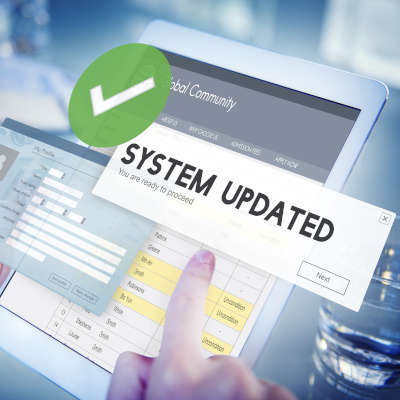
Your software is an important, even crucial, part of your business’ security considerations. After all, a software title with security issues could be the access point that hackers and scammers need. This is precisely why software updates and security patches are so important to keep up on. Let’s consider this in a little more detail.
Why Does Software Become Vulnerable?
Software is very different from most products or even services. Most products and services are designed and engineered in such a way that the result is intended to be the best it can be before it is released—recalls and other such issues being the exception, not the rule.
Software is a very different animal. Once a new title is released, hackers and cybercriminals get to work picking through the code in search of potential vulnerabilities. As threats are developed, the developers of said software need to create and distribute patches to mitigate them. Of course, cybercriminals are always crafting new means of undermining security, which means that developers always need to create new protections.
As a result, the developers and cybercriminals are always chasing each other around… with the consumers (AKA the business owners and IT admins who need the software) caught along for the ride.
Here’s the bare bones of it: if your software isn’t being updated appropriately, chances are good that it will eventually be used against your business—and, since you almost certainly use many different types of software throughout your operations, a process to help ensure all applicable updates and patches are applied will be an invaluable resource. Just think about the variety of things in your office that have a different software platform—there’s your desktops and laptops, which likely run Windows (preferably 10) and host web browsers like Chrome and Firefox, plus all the mobile devices with their own operating systems, applications, and device firmware.
Patch management helps you make sure that they are all attended to.
Patch Management and You
Patch management is the process that enables your organization to see to it that each piece of your business’ software is updated properly, minimizing the threat that it poses. Since all software could potentially open your business to some level of risk, this process needs to be applied to your productivity solutions, communication and collaboration tools, digital security protections, operating systems and platforms, in addition to whatever else you have installed.
Properly attending to your patch management will certainly prevent many potential intrusions onto your network, but it takes some time to handle it properly. That’s one reason that when we’re assisting our clients with their patch management processes, we use high-powered tools and technology solutions to monitor their systems around the clock to identify opportunities for improvement so that our professional techs can see to implementing them.
A Case Study in Support of Patch Management
Patch management is truly crucial… just consider Windows 7. Almost 20 percent of all PC users still run the antiquated and unsupported OS—despite Microsoft leaving it to the wolves in January 2020—which means that Windows 7 presents a real threat to a lot of users. It’s bad enough that the Federal Bureau of Investigation sent out a press release in August to encourage users to abandon it.
If your business needs assistance with organizing its patch management processes, give Nexela a call. Our team can easily attend to it for you, leaving you free to accomplish your goals. Give us a call at (215) 525-3223 to learn more.
